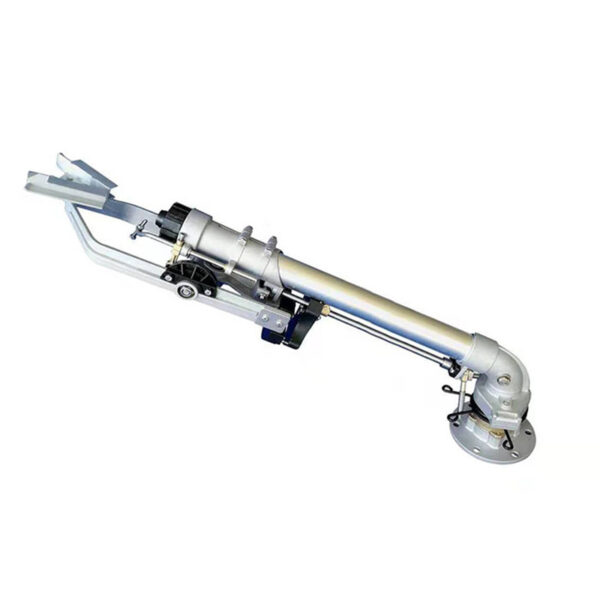What is the range of elevation angles that can be achieved with this spray gun, and how is it adjusted?
The specific range of elevation angles that can be achieved with a “50mm Elevation Angle Adjustable Vertical Arm Spray Gun” may vary depending on the design and manufacturer. However, I can provide a general overview of how the elevation angle adjustment typically works and the range that is common for such spray guns.
Elevation Angle Adjustment:
- The elevation angle adjustment feature allows the user to change the angle at which the spray nozzle discharges liquid or other substances. This adjustment is useful for directing the spray pattern to different areas, especially when the target surface is not at the same level as the spray gun.
- To adjust the elevation angle, there is typically a mechanism, such as a pivot joint, hinge, or swivel connection, near the base of the spray gun’s nozzle. This mechanism allows the user to tilt or angle the nozzle in various directions.
- The adjustment can often be made by hand or with the help of a tool, depending on the design of the spray gun. Some spray guns may have a locking feature to secure the chosen angle.
Range of Elevation Angles:
- The range of elevation angles that can be achieved with a 50mm Elevation Angle Adjustable Vertical Arm Spray Gun typically ranges from approximately 0 degrees (horizontal) to 90 degrees (vertical).
- In other words, you can adjust the spray gun’s nozzle from pointing parallel to the ground (horizontal) to pointing directly upwards (vertical) and any angle in between.
- This flexibility in elevation angle allows the spray gun to be used effectively for tasks that require precise targeting of surfaces at various heights or angles.
- The specific range may vary from one model or manufacturer to another, so it’s important to refer to the product specifications or manufacturer’s instructions for the precise range of angles for a particular spray gun.
The ability to adjust the elevation angle of the spray gun is valuable for tasks such as painting, cleaning, disinfecting, or applying chemicals, as it ensures that the spray can be directed accurately to the desired areas, regardless of their position relative to the spray gun.
Are there maintenance or cleaning procedures recommended to keep the spray gun in optimal working condition?
To maintain a “50mm Elevation Angle Adjustable Vertical Arm Spray Gun” in optimal working condition and extend its lifespan, it’s essential to follow recommended maintenance and cleaning procedures.
Here are some common steps you can take:
- Regular Cleaning:
- After each use, thoroughly clean the spray gun to remove any residue or build-up of the material sprayed. Use an appropriate cleaning solution and ensure all internal passages are clear.
- Flushing:
- Flush the spray gun with clean water or a suitable flushing solution to remove any remaining residue or material. This helps prevent clogs and corrosion.
- Nozzle Maintenance:
- Remove and clean the nozzle regularly, as it is a critical component for maintaining the quality and pattern of the spray. 50mm Elevation Angle Adjustable Vertical Arm Spray Gun Soak the nozzle in a cleaning solution, and use a small brush or nozzle cleaning tool to remove any debris or deposits.
- Lubrication:
- Some spray guns may have moving parts that require lubrication to prevent friction and wear. Follow the manufacturer’s recommendations for lubrication intervals and use appropriate lubricants.
- O-Ring Inspection:
- Check the O-rings and seals for signs of wear, damage, or deterioration. Replace any damaged O-rings to maintain a secure seal and prevent leaks.
- Pressure Adjustments:
- If your spray gun has pressure adjustment settings, make sure to set and adjust the pressure according to the requirements of your specific application.
- Storage:
- Properly store the spray gun in a clean, dry, and protected environment when not in use. Keep it away from extreme temperatures or harsh weather conditions.
- Nozzle Size and Configuration:
- Verify that the nozzle size and configuration are suitable for the material being sprayed. Different materials may require different nozzle types for optimal performance.
- Periodic Inspection:
- Regularly inspect the spray gun for any visible wear, damage, or loose components. Ensure that all adjustments and locking mechanisms are functioning correctly.
- Manufacturer’s Guidelines:
- Follow the manufacturer’s specific maintenance recommendations and guidelines provided in the product’s user manual or documentation.
- Training:
- Ensure that the personnel operating the spray gun are properly trained in its use, maintenance, and safety procedures.
Proper maintenance and cleaning of your spray gun are crucial for achieving consistent performance and preventing issues such as clogs, material build-up, or nozzle blockages. Neglecting maintenance can lead to reduced efficiency and a shorter lifespan for the equipment. Always refer to the manufacturer’s instructions and guidelines for your specific spray gun model.
